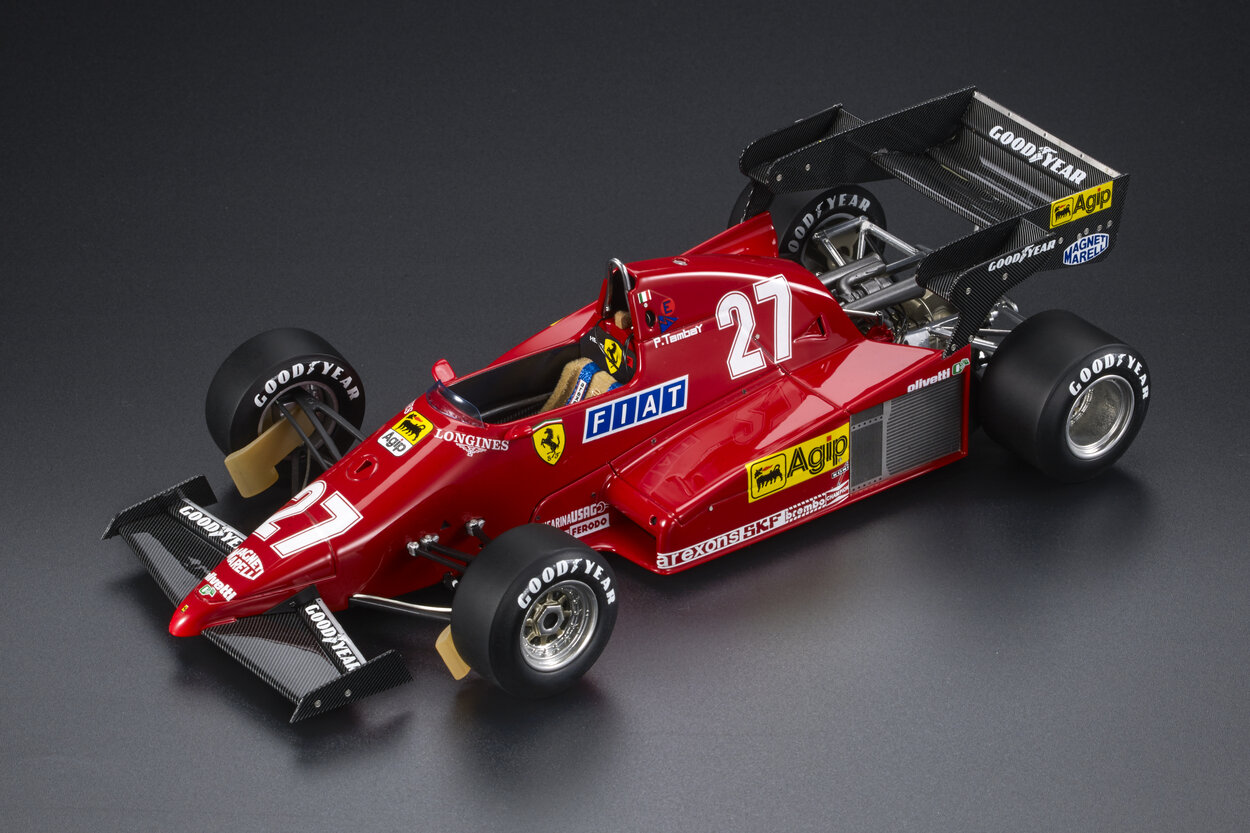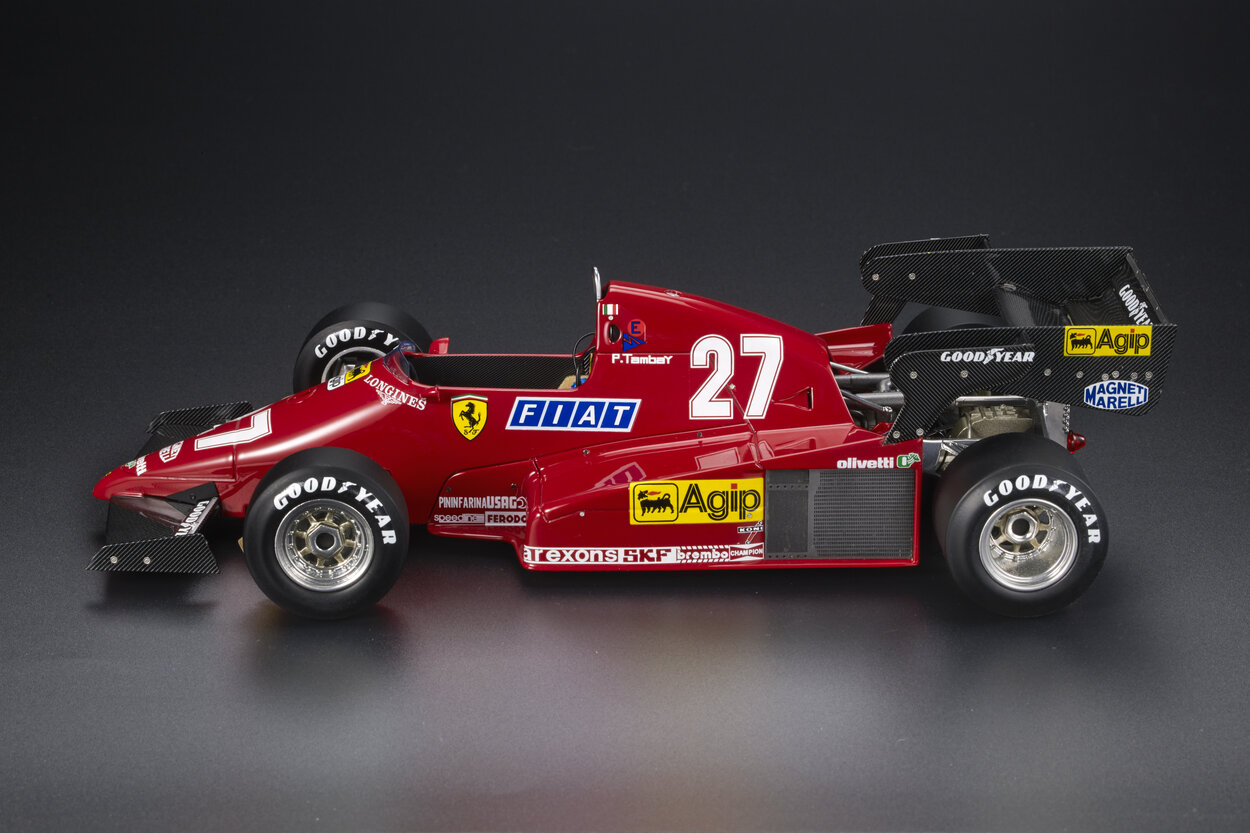Ferrari 126 C3
The 126 C3 model is the car that the two Scuderia Ferrari drivers use in the second part of the 1983 season, starting from the British Grand Prix at Silverstone. It’s unusual for a team like Ferrari to introduce a new model mid-season, but ’83 is a very particular year because the innovations introduced that year are somewhat epoch-making, and most teams are not ready, at the beginning of the season, with completely new cars. Exactly as it happens with Ferrari, which in the first seven races of the year uses a modified version of the previous year’s car.
The accidents that occurred during the 1982 season, the most serious of which affected Ferrari itself, prompted the Federation to take action and get rid of the famous ground effect, considered too dangerous and the cause of the tragic incidents involving both Villeneuve and Pironi. Thus, the side skirts disappear; the flat bottom arrives, with a mandatory height from the ground of 6 centimetres, and a deformable structure in the front part of the car, in front of the pedals. The dimensions of the rear spoilers are also reduced, although these bans will lead to rather imaginative solutions in the ’83 season and especially in the following one.

Drivers:
Patrick Tambay: In mid-July 1983, Tambay brings the 126 C3 to a third-plcae finish in its debut race at Silverstone. In qualifying, he set the second-best time behind his teammate Arnoux. In the remaining six races of the season, Patrick suffered four retirements, finished fourth in Monza, and second in Zandvoort. He secured pole positions at Hockenheim and Zeltweg. With the points accumulated in the first part of the year, he contributed to winning the Constructors’ World Championship.
René Arnoux: In qualifying for the debut race of the 126C3, Arnoux secures pole position. However, the race doesn’t go as well, and the French driver finishes fifth. But in the subsequent four races, René achieves two victories in Germany and the Netherlands and two second places in Austria and Italy. He also sets the fastest race lap at Hockenheim and Zandvoort. At the end of the season, he finishes third in the World Championship, his best career placement.
Our model cars:

For the first time in Ferrari’s history, and to increase rigidity, the chassis serves as the bodywork and is made of composite materials – Kevlar, Nomex, and carbon fiber – in two semi-shells glued together hot. At the presentation, the 126 C3 surprises everyone with the arrow-shaped bodywork, although the car will never actually race in this exact configuration.

